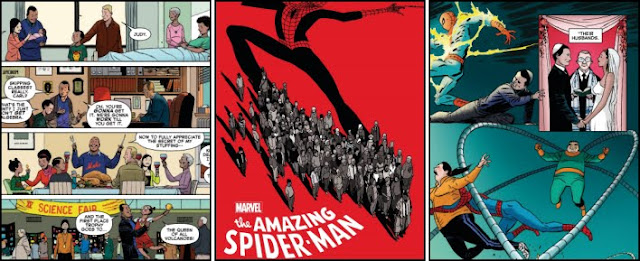 |
| ALIENS: DUST TO DUST No. 3, October 2018 |
Indeed, whether it be Roman and his aged wife’s horribly bloody deaths during this comic’s gore-fest of an opening, or the callous co-pilot’s ‘all-too just mutilation’ at the hands of a howling mob of aliens, having literally just refused to let the terrified boy and Waugh back into the building because “I’m not dying for them”, the persistent deadly threat of Ridley Scott’s legacy is palpably all-pervading, and rarely lets up even when the captain believes there’s “no evidence of xenomorph activity” and begins making sensible-sounding plans to reach a terraforming station the following morning. Certainly, it soon becomes hard to keep track of just who is still alive within the group as the “mysterious and deadly creatures” stalking them continuously claw, bite and tear their number asunder…
Arguably this comic’s greatest highlight however, has to be young Cregar’s headlong dash through the magazine’s final third, which starts with the adolescent being roughly rushed around the alien-infested sanctuary’s exterior by the unfriendly Assistant Administrator, and ends with him haplessly plunging into a fast-flowing river of “overflow from the facility’s cooling tower” along with the tale’s last remaining few fighters and a plethora of hostile life-forms. In fact, Hardman’s scratchy-styled line work for this sequence is so well-suited to the scene’s sense of panicked desperation, that it is a pity the frenzied flight across the broken bridge’s depilated suspension cable doesn’t last that bit longer and perhaps replaced the Hugo Award-nominee’s patronising panels within which Anne’s son is told to rest because “you’re just a kid.”
 |
| The regular cover art of "ALIENS: DUST TO DUST" No. 3 by Gabriel Hardman |


































